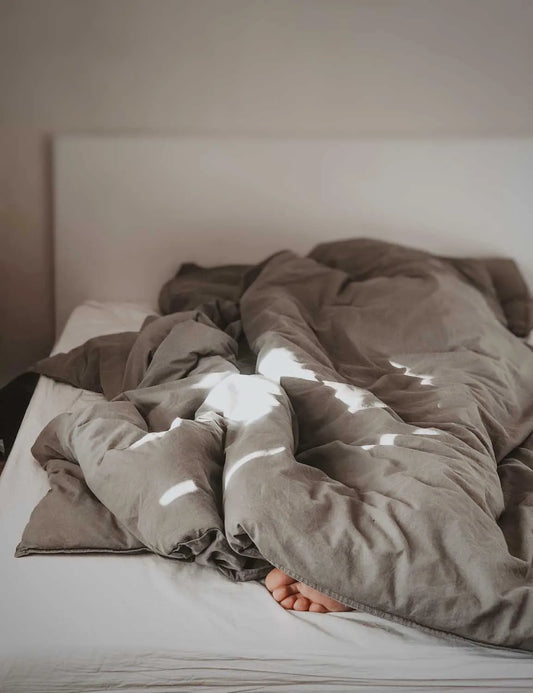| This article is for informational purposes only and is not intended as medical advice. Always consult your healthcare provider for guidance regarding sleep disorders and treatment options. |
Dive into the intriguing topic of jet lag, its causes, symptoms, and tips for recovery. At Remly Sleep, we're dedicated to leveraging research for product development, and The Dream Lab is our way of sharing the knowledge we gain with you.
Traveling is an exciting opportunity to explore new places and cultures. However, crossing time zones can often leave us feeling fatigued and disoriented. This is where jet lag comes into play. In this article, we'll discuss what jet lag is, its causes and symptoms, and provide tips for a quicker recovery. We'll also introduce some Remly products that can help you combat the effects of jet lag, ensuring that you make the most of your travels.
Understanding Jet Lag
Jet lag, also known as time zone change syndrome, is a temporary sleep disorder that occurs when traveling across multiple time zones. It results from the misalignment of the body's internal clock, or circadian rhythm, with the local time at the destination. Jet lag can cause a variety of symptoms, including fatigue, insomnia, and gastrointestinal issues.
It is important to remember that jet lag affects everyone differently. Factors such as age, overall health, and individual sleep patterns can all influence how severely jet lag impacts a person. With that in mind, let's delve into the causes and symptoms of jet lag, and explore some strategies for minimizing its effects.
Causes of Jet Lag
- Rapid Travel Across Time Zones: The primary cause of jet lag is rapid travel across multiple time zones, which disrupts the body's internal clock. This clock regulates various physiological processes, including sleep-wake cycles, body temperature, and hormone production. Understanding the circadian rhythm can help you grasp the science behind jet lag.
- Direction of Travel: Traveling eastward typically causes more severe jet lag than westward travel. This is because it's easier for the body to extend its internal clock (as occurs when traveling westward) than to compress it (as occurs when traveling eastward).
In addition to the primary causes mentioned above, factors such as cabin pressure and altitude, dehydration, and pre-existing sleep debt can also exacerbate the effects of jet lag.
Symptoms of Jet Lag
Common symptoms of jet lag include:
- Fatigue and tiredness during the day
- Insomnia or difficulty falling asleep at night
- Gastrointestinal issues, such as constipation or diarrhea
- Difficulty concentrating or focusing
- Mood disturbances, such as irritability or mild depression
- General feeling of malaise or discomfort
These symptoms can last anywhere from a few days to a week or more, depending on the individual and the number of time zones crossed.
Tips for Recovering from Jet Lag
To help minimize the impact of jet lag and recover more quickly, consider implementing the following strategies:
- Gradually Adjust Your Sleep Schedule: Before your trip, try to adjust your sleep schedule by going to bed and waking up an hour earlier or later each day, depending on the direction of travel. This can help minimize the impact of jet lag upon arrival.
- Maximize Exposure to Natural Light: Light exposure is a powerful regulator of the circadian rhythm. Spend time outdoors in natural light during the day, and avoid bright light exposure in the evening to help your body adjust to the new time zone. Learn more about the impact of light on sleep.
- Stay Hydrated: Dehydration can exacerbate jet lag symptoms. Drink plenty of water during your flight and throughout your trip to stay properly hydrated. Opting for water instead of caffeinated or alcoholic beverages can also help keep you hydrated.
- Avoid Caffeine and Alcohol: Both caffeine and alcohol can interfere with sleep and make jet lag symptoms worse. Limit their consumption, especially in the hours before bedtime.
- Exercise: Engaging in moderate physical activity during the day can help regulate your circadian rhythm and improve sleep quality. However, avoid exercising too close to bedtime, as it may make it more difficult to fall asleep. Discover the benefits of exercise for sleep.
- Take Short Naps: If you're feeling tired during the day, take a short nap (20-30 minutes) to help boost your energy levels. Avoid napping too close to bedtime, as it can interfere with nighttime sleep.
- Consider Melatonin Supplements: Melatonin is a hormone that helps regulate sleep-wake cycles. Taking melatonin supplements can help some travelers adjust to a new time zone more quickly. Consult your healthcare provider before using melatonin or any other sleep aids. Learn more about melatonin and its role in sleep.
In addition to these tips, consider incorporating some helpful Remly products into your travel routine:
- Remly Sleep Mask: This comfortable and adjustable sleep mask can help you achieve total darkness, making it easier to fall asleep and stay asleep during your travels.
- Remly 70% Blue Light Blockers: Wearing blue light-blocking glasses in the evening can help signal to your body that it's time to wind down, assisting in the adjustment to a new time zone.
Explore the full Remly Sleep collection for more sleep-enhancing products.
Concluding Thoughts
Jet lag can be an unwelcome companion during our travels, but with proper planning and the right strategies, we can reduce its impact and enjoy our trips to the fullest. By understanding the causes and symptoms of jet lag, and incorporating the tips and Remly products mentioned above, you can effectively manage jet lag and ensure a more pleasant travel experience.
Thank you for exploring with us at The Dream Lab. Remly Sleep is on a mission to make you sleep better by sharing the latest sleep research and incorporating this knowledge into our innovative products. We're excited to journey together and discover more insights on sleep and well-being.




